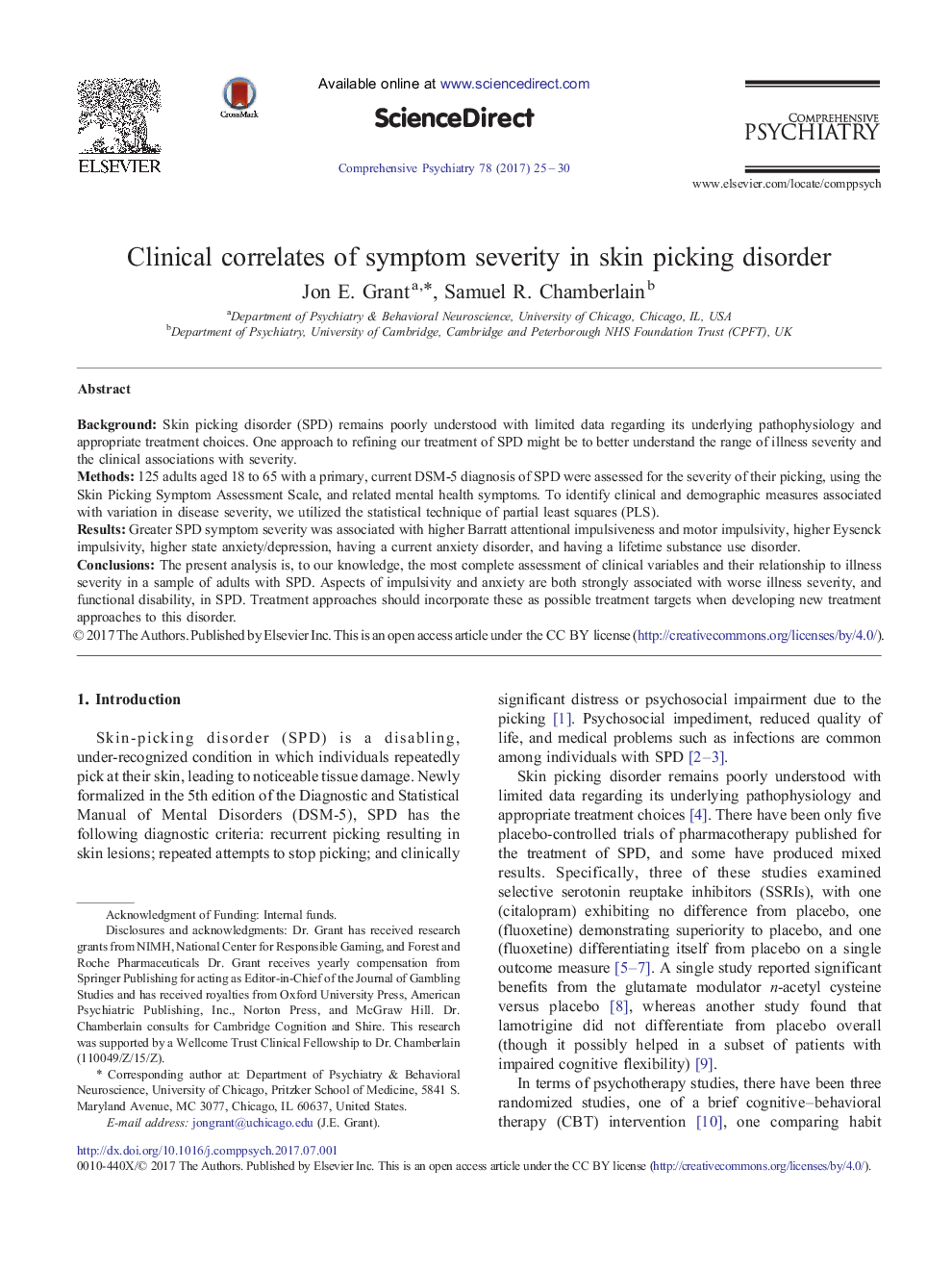| Article ID | Journal | Published Year | Pages | File Type |
|---|---|---|---|---|
| 4930086 | Comprehensive Psychiatry | 2017 | 6 Pages |
BackgroundSkin picking disorder (SPD) remains poorly understood with limited data regarding its underlying pathophysiology and appropriate treatment choices. One approach to refining our treatment of SPD might be to better understand the range of illness severity and the clinical associations with severity.Methods125 adults aged 18 to 65 with a primary, current DSM-5 diagnosis of SPD were assessed for the severity of their picking, using the Skin Picking Symptom Assessment Scale, and related mental health symptoms. To identify clinical and demographic measures associated with variation in disease severity, we utilized the statistical technique of partial least squares (PLS).ResultsGreater SPD symptom severity was associated with higher Barratt attentional impulsiveness and motor impulsivity, higher Eysenck impulsivity, higher state anxiety/depression, having a current anxiety disorder, and having a lifetime substance use disorder.ConclusionsThe present analysis is, to our knowledge, the most complete assessment of clinical variables and their relationship to illness severity in a sample of adults with SPD. Aspects of impulsivity and anxiety are both strongly associated with worse illness severity, and functional disability, in SPD. Treatment approaches should incorporate these as possible treatment targets when developing new treatment approaches to this disorder.
